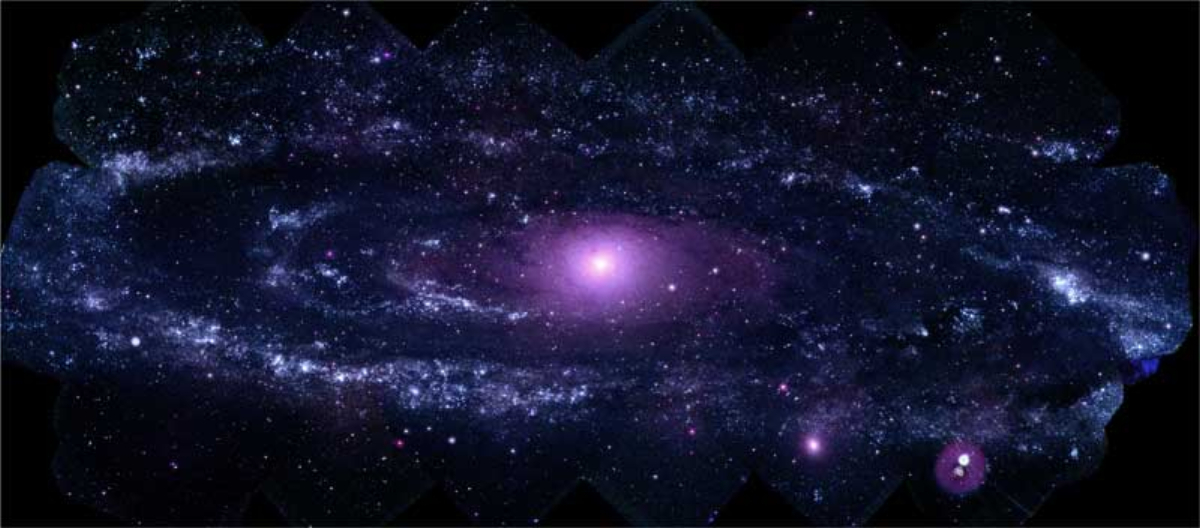
 Credit: NASA/Swift/Stefan Immler (GSFC) and Erin Grand (UMCP)
Credit: NASA/Swift/Stefan Immler (GSFC) and Erin Grand (UMCP)
Andromeda Unchained
The Universe looks different in the ultraviolet. The ultraviolet universe is dominated by radiation produced by hot stars, mostly young massive stars. These rare, young, massive stars serve as signposts of star formation, so by studying UV emission, astronomers can learn much about how stars are born. The image above is a new ultraviolet picture of M31, the Andromeda galaxy, the Milky Way's neighbor. The image above is the highest-resolution image of the galaxy ever recorded in the ultraviolet and shows a region 200,000 light-years wide and 100,000 light-years high. This mosaic was obtained by the Ultraviolet and Optical Telescope on the Swift observatory. The Swift spacecraft is dedicated to hunting down gamma-ray bursts, but when it has some spare time between bursts it can make all sorts of useful additional observations, like the stunning portrait above. In this ultraviolet image, dense clusters of hot young stars clearly identify the outer spiral arms where new stars form. A small fraction of these stars are very massive and will one day explode as supernovae - or maybe even a gamma-ray burst.
Published: October 5, 2009
<
HEA Dictionary ● Archive
● Search HEAPOW
● Other Languages
● HEAPOW on Facebook
● Download all Images
● Education ● HEAD
>
Each week the HEASARC
brings you new, exciting and beautiful images from X-ray and Gamma ray
astronomy. Check back each week and be sure to check out the HEAPOW archive!
Page Author: Dr. Michael F. Corcoran
Last modified Tuesday, 27-Feb-2024 10:06:44 EST


